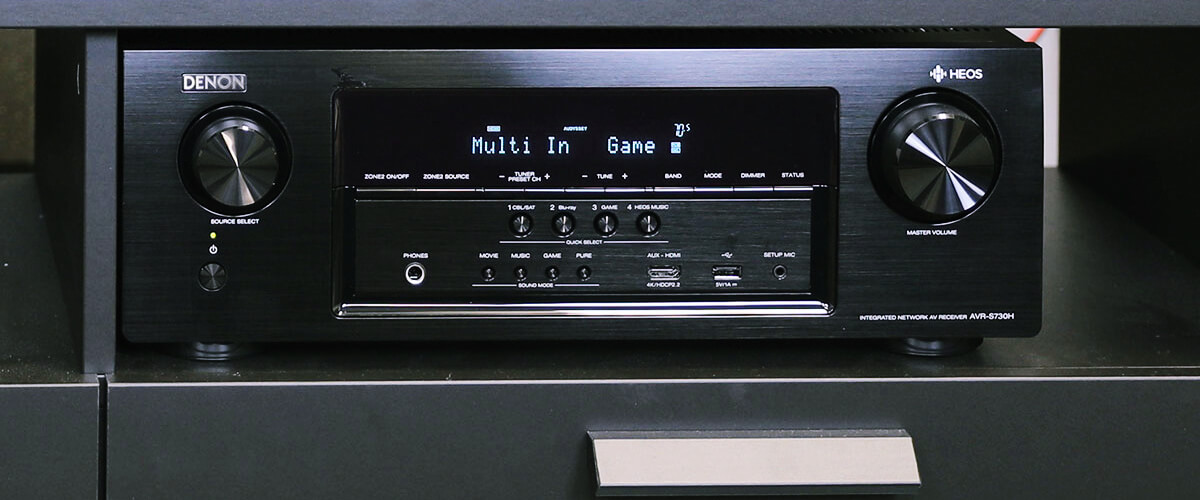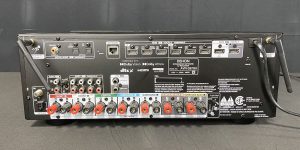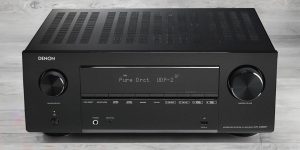Have you ever wondered how the sound appears in the speakers? You have probably heard that for acoustics to work and give you quality sound in movies and music — you need an amplifier or maybe a receiver. Altogether, what’s the difference between a receiver, amplifier, and preamplifier?
Some acoustic systems and devices already have built-in amplifiers hidden inside. Yet, Hi-End acoustics, specially dedicated to music, most frequently has a separate device.
I guess you are building a home entertainment system and have the question of preamp vs. amp vs. receiver. So, which is better for your exact case? Let’s find out together.
What is an AV-Receiver, and why would you need one?

The AV receiver is the brain of your home entertainment system. It takes the signal from all sources in the house (players, media servers, gaming consoles, etc.) and delivers it to every part of the home theater (TV, projector, speakers). The receiver also allows you to switch between different inputs, amplify the audio signal, and process it with an equalizer and other effects.
The receiver combines a digital-to-analog converter (DAC that turns zeros and ones into audio). A multichannel audio decoder has a dedicated processor and power amplifiers for each sound channel. Modern models support Bluetooth and Wi-Fi, allowing the units to pair with wireless speakers and mobile devices. But even if you have a receiver model that doesn’t have built-in Bluetooth, you can add it in a few simple ways.
The receiver is the link between all home media devices. It will help to connect them to a network, easily switch between different sources, listen to music and watch movies from anywhere. Any sophisticated home entertainment system starting from a 5.1 channel setup needs a receiver to operate.
What is an amplifier, and why may you want to get one?

Amplifiers increase the sound signal level to deliver the sound to the speaker’s speaker. There are two main types of amplifiers. The first one is the weak-signal amplifier. Most frequently, these are used in wireless receivers and designed to work with relatively weak input signals. The second type is Power Amplifier. This one is more interesting for those building high-end sound systems at home. Such devices work with a broad range of signals and can amplify them to significant powers.
So, receivers and amplifiers deliver quality sound, but where is the catch? AV receivers show way less impressive results in music when compared to dedicated stereo power amplifiers. The reason is that today’s AV receiver is a set of compromises, and the impressive cost of some models doesn’t guarantee that the unit will sound good at music. After all, manufacturers compromise to find a place for all the electronics in a relatively small case.
From this perspective, a dedicated amplifier would offer much more quality sound, driving more powerful speakers and letting them show all the quality they can. It is especially true for music because usually power amplifiers are not multichannel.
What is a preamp, and why may you need one?

The preamplifier does the initial amplification and then sends the signal to the power amplifier for it to be delivered to the speakers. In a home theater system, the preamplifier performs two main functions: it controls the source devices and regulates what signal goes to the amplifier. Plus, it does the initial amplification to make the signal sufficient for additional processing, preventing noise from penetrating and providing a cleaner output.
As I’ve said before, an AV receiver is, in fact, an all-in-one unit that does the amplification and signal management. Yet, it is not perfect, so you still may need dedicated units, as these would produce a richer, fuller sound with minimal distortion.
So, a preamplifier is a must? Not necessarily, but it would be a huge benefit if you need to manage several signal sources. The more sources you are going to connect, the more benefits a preamp will provide. It serves as the control center for your audio players and ensures proper signal routing and optimal quality.
To achieve sonic excellence, choose a device that suits your needs. Thus, a receiver is the finest choice for watching movies and video games. In turn, a preamplifier paired with an amplifier will give superior quality in listening to music. But getting two devices can be costly. You can also create a mix with a receiver and amplifier. Choose the receiver with pre-amplified Zone 2. Thus, you will have a 5.2 or 7.2 channel setup in the main room and another room with an amplifier to listen to music. So assess your budget, determine your basic needs and make the right choice based on my recommendations.









